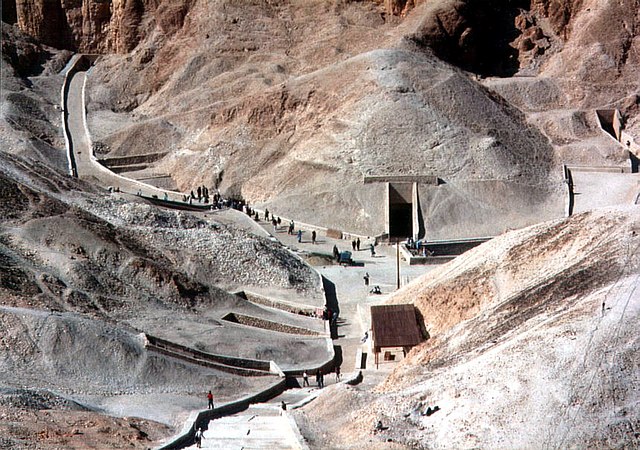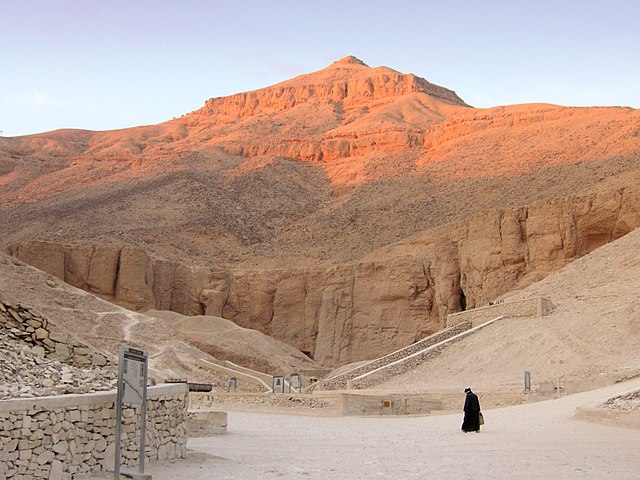Tomb KV9 in Egypt's Valley of the Kings was originally constructed by Pharaoh Ramesses V. He was interred here, but his uncle, Ramesses VI, later reused the tomb as his own. The architectural layout is typical of the 20th Dynasty – the Ramesside period – and is much simpler than that of Ramesses III's tomb (KV11).
The workmen accidentally broke into KV12 as they dug one of the corridors. In 2020, the Egyptian Tourism Authority released a full 3D model of the tomb with detailed photography, available online.
KV9
View down the first corridor of the tomb
A part of the Book of Gates (ninth division) on the left wall of the corridor
A part of the Book of Caverns (fifth division) on the right wall of the corridor; the goddess Nut is visible on the right
The Valley of the Kings, also known as the Valley of the Gates of the Kings, is an area in Egypt where, for a period of nearly 500 years from the Eighteenth Dynasty to the Twentieth Dynasty, rock-cut tombs were excavated for pharaohs and powerful nobles under the New Kingdom of ancient Egypt.
View of the central East Valley, showing the area around KV62.
Panorama of the valley, looking north
The "Sepulchres of the Kings of Thebes", Richard Pococke, 1743
Al-Qurn dominates the valley.








